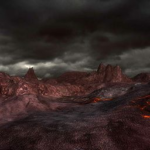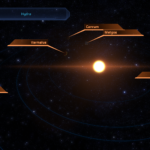System Specs:
- Stellar Mass: .957 Sol Masses
- Stellar Class: G
- Luminosity: N/A Sol
- Planets: 5
- Moons: 0
- Asteroid Belts: 0
- Asteroids: 0
- Objects: 0
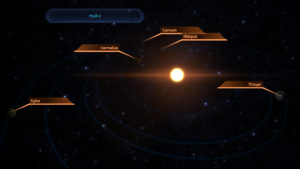
It may be named after the Lernaean Hydra, a monster from Greek mythology with nine heads that is killed by Hercules during his Twelve Labors.
–
Planets Directory:
- Varmalus
- Metgos
- Theyar
- Canrum
- Syba
–
Varmalus:
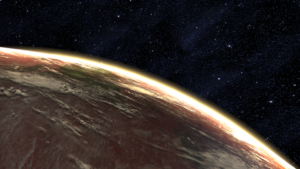
- Orbital Distance: 0.5 AU
- Orbital Period: 0.4 Earth-years
- Keplerian Ratio: 0.781
- Radius: 9,593 km
- Day Length: 19.4 Earth-hours
- Atmospheric Pressure: 1.3 atm
- Surface Temp: 503 °C
- Surface Gravity: 1.2 g
- Mass: 2.7 Earth-masses
Varmalus has a thick atmosphere of nitrogen and helium. Its surface is scorching hot, and mainly composed of alumina with deposits of borax. The planet has an extensive network of subterranean caves, formed over the millennia by volcanic processes. In these relatively cool areas, some primitive life has developed.
–
Metgos:
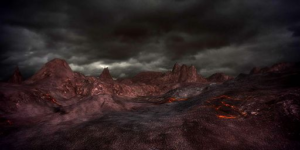
- Orbital Distance: 2.0 AU
- Orbital Period: 2.8 Earth-years
- Keplerian Ratio: 1.02
- Radius: 7,301 km
- Day Length: 47.2 Earth-hours
- Atmospheric Pressure: 1.00 atm
- Surface Temp: 169 °C
- Surface Gravity: 1.1 g
- Mass: 1.4 Earth-masses
WARNING: Level 2 Heat Hazard
Metgos is a large terrestrial planet with an atmosphere of carbon dioxide and nitrogen. Its hot surface is mainly composed of nickel with deposits of potassium and heavy metals. It is a mineralogical treasure trove, with concentrated heavy elements constantly being brought to the surface by volcanic activity.
Metgos is inhospitable and dangerous, and expeditions must be well-prepared to survive any length of time. With its high mass, heat-trapping clouds and constant volcanic venting, Metgos seems well on its way to becoming a Venusian “pressure cooker” world.
–
Theyar:
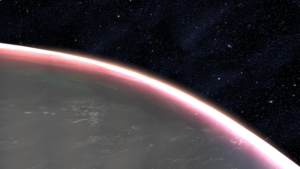
- Orbital Distance: 5.45 AU
- Orbital Period: 12.8 Earth-years
- Keplerian Ratio: 0.988
- Radius: 60,774 km
- Day Length: 11.8 Earth-hours
- Atmospheric Pressure: _ atm
- Surface Temp: _ °C
- Surface Gravity: _ g
- Mass: _ Earth-masses
Theyar is a large gas giant with traces of chlorine and sodium in its atmosphere. It also has a significant amount of water vapor in the clouds of its upper atmosphere.
Theyar was struck by an asteroid at least 12 kilometers in diameter within the last hundred years. The super-heating caused by the impactor’s atmospheric passage created a large bank of vicious storms along the equatorial band.
–
Canrum:
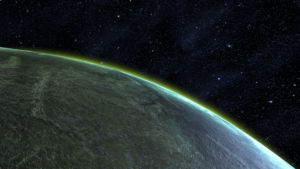
- Orbital Distance: 16.52 AU
- Orbital Period: 67.3 Earth-years
- Keplerian Ratio: 0.995
- Radius: 5,220 km
- Day Length: 32.5 Earth-hours
- Atmospheric Pressure: 0.07 atm
- Surface Temp: -132 °C
- Surface Gravity: 0.55 g
- Mass: 0.36 Earth-masses
Canrum is a small, rocky world with a trace atmosphere of methane and krypton. Its surface is mainly composed of magnesium and silicates with deposits of carbon.
Canrum was the site of the warlord Shiagur’s defeat by turian peacekeeping forces during the Krogan Rebellions. While this band was not especially powerful, Shiagur was a female warlord – and one of the few remaining fertile females, at that. She had, through viciousness and cunning, parlayed her unique value into a position of power. Krogan males competed for the right to join her band and lie with her.
When Shiagur’s death was announced, vengeful male krogan admirers near and far swore blood oaths against the participating turian crews. In the end, several thousand of the turian participants were killed in open combat or through assassination. To this day, many krogan proudly proclaim that they have the “blood of Shiagur.”
–
Syba:

- Orbital Distance: 29.66 AU
- Orbital Period: 162.1 Earth-years
- Keplerian Ratio: 0.993
- Radius: 45,145 km
- Day Length: 12.8 Earth-hours
- Atmospheric Pressure: _ atm
- Surface Temp: _ °C
- Surface Gravity: _ g
- Mass: _ Earth-masses
Syba is a standard Neptune-type gas giant, the upper cloud decks of its hydrogen-helium atmosphere tinted a dramatic blue by traces of methane.
–
video

